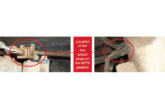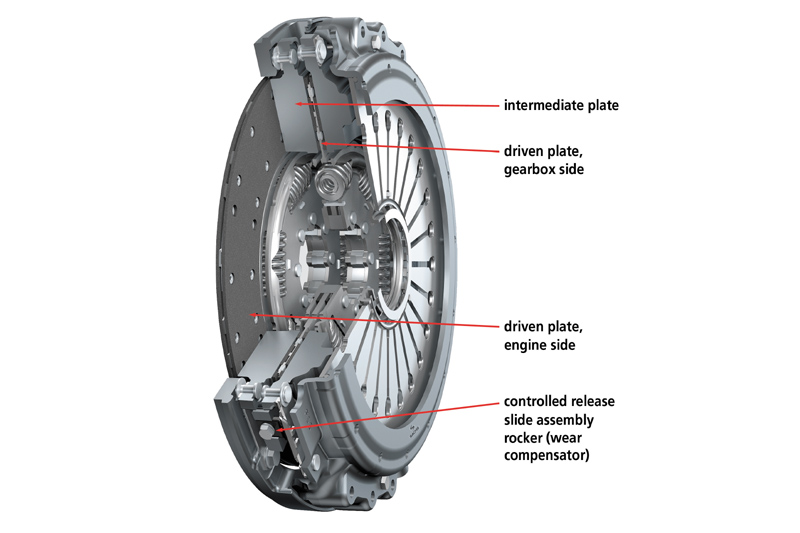
Wayne McCluskey, Technical Training Manager at ZF Services UK, explains when to adjust Sachs twin-plate clutch wear compensators.
Heavy vehicles, extreme loads, arduous terrain, constant manoeuvring or frequent hill starts are just some of the reasons that a twin-plate clutch (See image above) may be specified. By doubling the number of friction surfaces and adding an intermediate plate, the twin-plate clutch gains greater torque-handling ability and increased capacity for heat absorption. This in turn enables it to cope with the type of usage that could cause a single-plate clutch to wear prematurely or burn out. Using two clutch driven plates also provides two sets of torsional vibration dampers, which helps to reduce noise and stress in the powertrain.
While replacement procedures are broadly similar to those of a single-plate unit, a twin-plate clutch also features an additional control system in the form of controlled-release slide assemblies, commonly referred to as wear compensators. Built into the clutch cover, these are essential to the reliable operation and durability of the clutch. The purpose of the wear compensators is to ensure that uniform clearances are maintained between the friction and mating surfaces throughout the working life of the clutch, so that both driven plates release fully when the clutch pedal is operated.
It is possible that confusion may arise as to whether it is necessary to adjust the wear compensators when fitting a Sachs twin-plate clutch, as there are three different designs of wear compensator used: T-slide, L-slide and rocker. Two of these require adjustment after fitting the clutch, while the third does not – and making the wrong decision can lead to drivability problems.
It is therefore important to establish which of the three types is fitted on the clutch before installation. The slide types need their initial position set by the workshop technician after the cover assembly has been bolted to the flywheel, but the rocker type requires no adjustment.
Adjustment procedures for slide type wear compensators
T-slide and L-slide wear compensators are used on earlier designs of twin-plate clutches and require the initial position of the slides to be set. Failure to correctly adjust these will cause problems with gear shifting, as the engine-side driven plate may not release.
Adjustment must be carried out only after installation of the clutch assembly to the flywheel – the photographs illustrating the procedures are shown with the clutch out of the vehicle for the sake of clarity.
T-slide
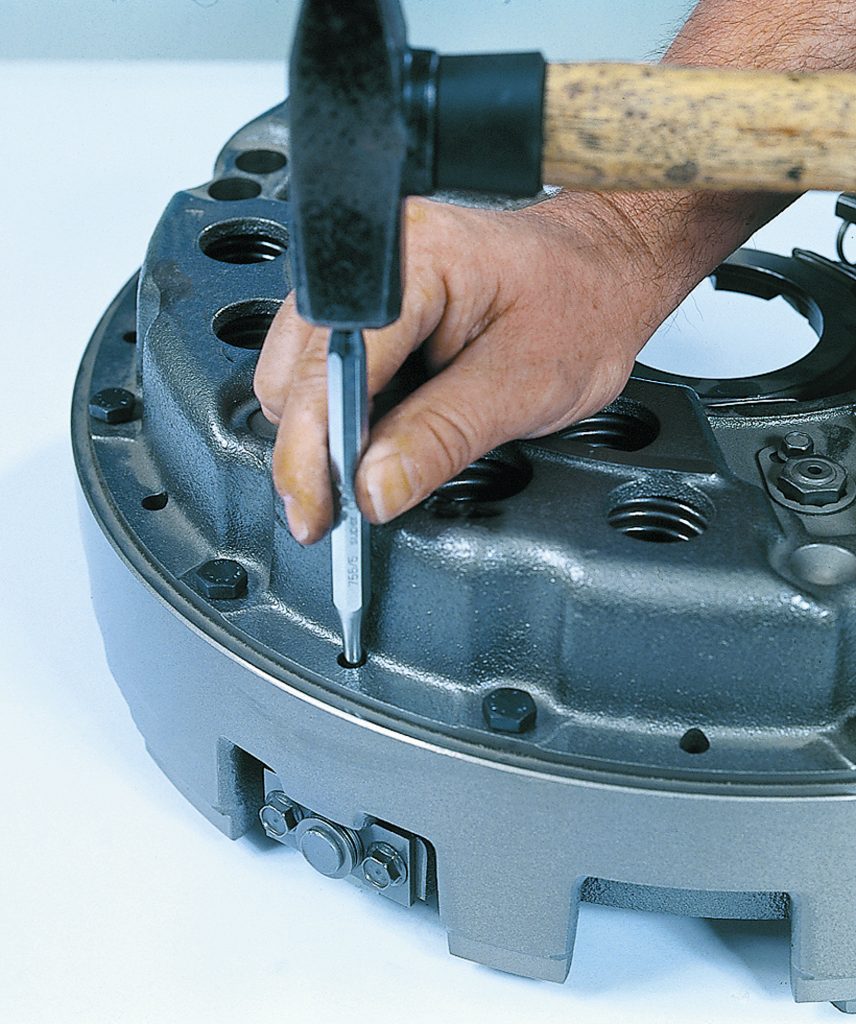
Using a hammer and drift through the hole provided above the wear compensator, carefully tap the slide towards the flywheel (Figs 1 and 2) – there will be an obvious change in feel and sound as the slider moves past the friction material and contacts the stop. A few gentle taps is all that is required, heavy or prolonged hammering may damage the mechanism. Repeat the process on the remaining two slides – all three must be adjusted correctly to ensure that both driven plates will release.
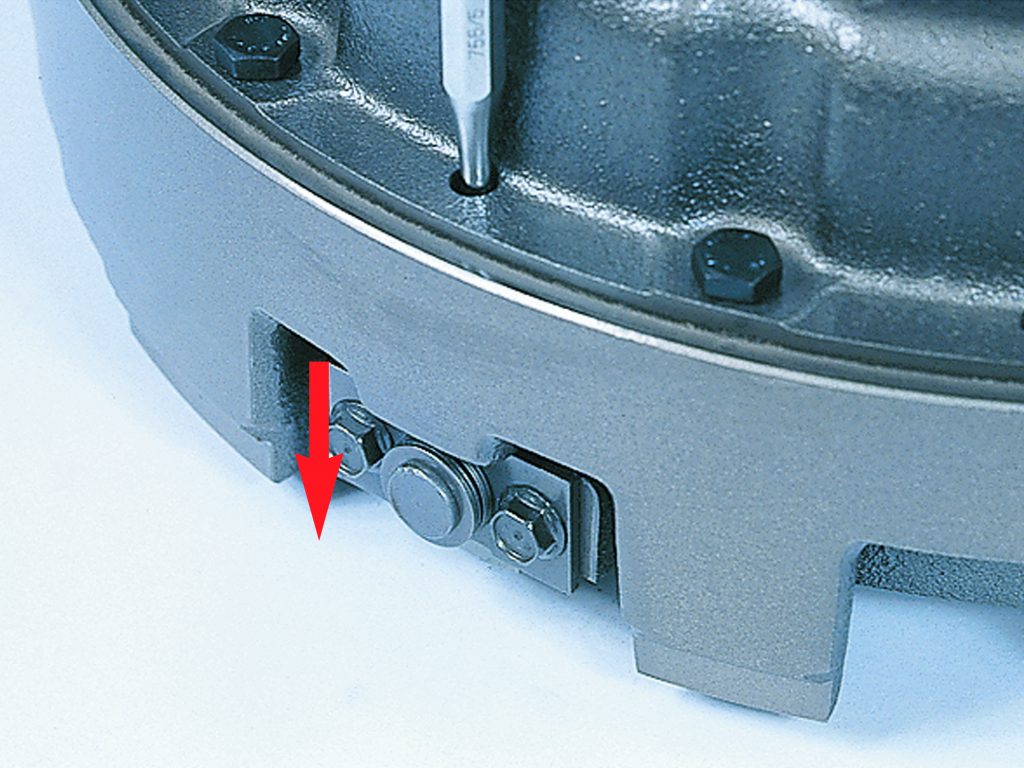
L-slide
To adjust an L-slide wear compensator, use a suitable lever to move each of the sliders away from the flywheel up to the intermediate plate (Fig 3). It is perhaps also worth noting here that some clutches using the L-slide type of wear compensator are designed with bolts passing through the diaphragm spring into the pressure plate. These are sometimes wrongly assumed to be transport bolts and removed – a temptation that should be strongly resisted.
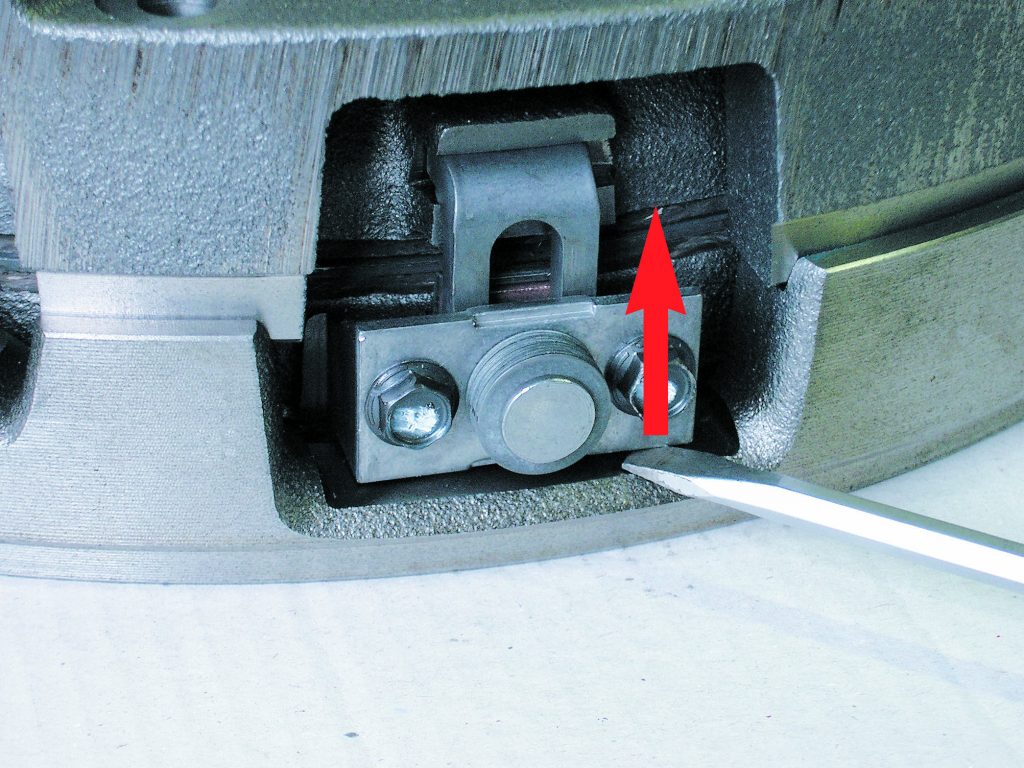
Rocker type wear compensator
The rocker type wear compensator (Fig 4) is the preferred design for later twin-plate clutches. It has a fixed setting that must not be changed and therefore requires no adjustment by the technician after fitting.
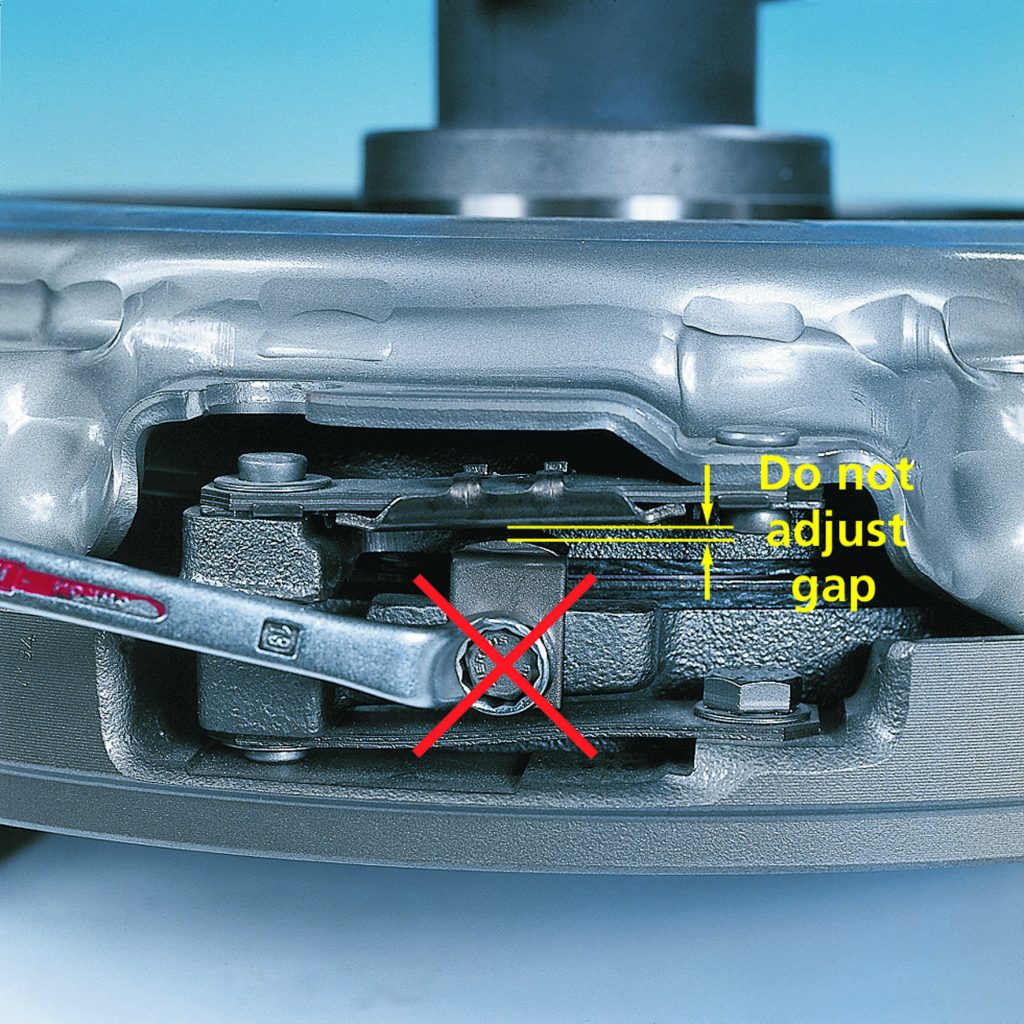
However, the gap between the operating elements of the wear compensator is sometimes assumed to be due to movement during transit, which needs ‘correcting’ before fitting the clutch. This has come to light through instances of Sachs twin-plate clutches being returned to ZF Services UK under warranty, where it is obvious that a well-meaning technician has closed up the gap. The presence of the gap is perfectly normal before fitting, and will reduce to the correct clearance as the cover is bolted down to the flywheel. Any interference with the factory setting will cause the driven plates not to release properly.
In summary
On older design twin-plate clutches fitted with T-slide or L-slide wear compensators, adjust these after fitting the clutch. For later clutches fitted with the rocker type of compensator, no adjustment is required.








